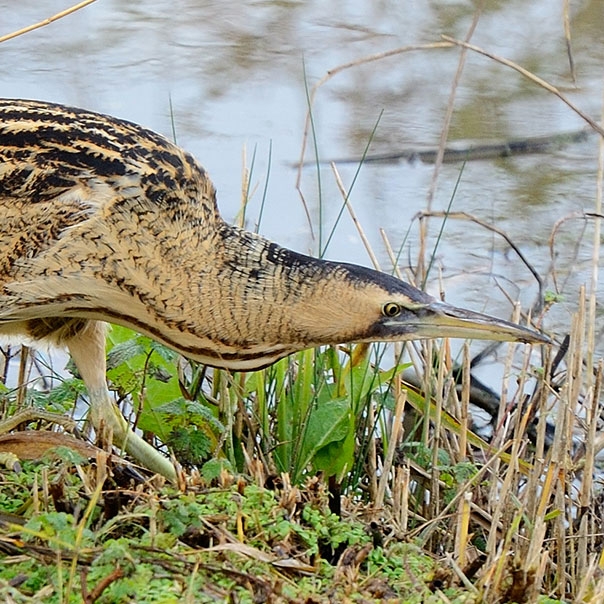Rails and crakes found in UK wetlands
Truly birds of where land meets water, many members of this family are elusive, more often being heard than seen. Creeping around the margins of wetlands, they feed on vegetation and small animals. Some though are more common and easily seen.
Water rail
(Rallus aquaticus)
Resident across the UK, their numbers increase in winter with birds escaping frozen conditions on the continent. Many spend the winter on small wetlands, even in urban spaces. Secretive and shy, but noisy; often emitting a range of squealing and grunting calls, not unlike those of a pig.
If you spot one in the open, look out for dark, striped plumage and blue face and front, with a long, red bill.

Moorhen
(Gallinula chloropus)
Very common across the UK. Found at wetland margins, particularly where there is plenty of vegetation cover, but can also be seen well out in the open.
Plumage is near-black, with long green-yellow legs, red forehead and bill, with a yellow tip.

Coot
(Fulica atra)
Resident across the UK, can be seen on a range of water bodies from small ponds to large lakes, where they can gather in their hundreds to spend the winter.
The origin of ‘as bald as a coot’, a white forehead and bill contrasts with a black head and sooty-grey body plumage. Out of the water, their green-blue feet show long, lobed toes.

Many of the rails and crakes are elusive, but you’d be extremely lucky to spot any of the following. However, with changing climates and more wetland habitat in the UK, some could become more commonly seen and breeding records increase.
Spotted crake
(Porzana porzana)
Similar to a water rail, both in their elusive nature and looks, this species breeds widely across Europe, spending the winter in eastern Africa and India. There are a handful of breeding records every year from the UK in wet meadow habitat – on still summer nights, listen out for their song like the first half of a ‘wolf-whistle’, likened to a dripping tap as they repeat it.

Little crake
(Zapornia parva)
A very rare visitor to the UK, with the nearest breeding populations as close as central France and northern Germany, breeding widely across eastern Europe. They migrate to winter across Africa, Iran and Pakistan. It’s not known to have bred in the UK but singing (or ‘yapping’) birds in appropriate habitat are occasionally heard, so they should be on your radar to listen out for.

Baillon’s crake
(Zapornia pusilla)
A former UK breeder that suffered from habitat loss in the 19th century, now a very rare visitor. They have a more easterly breeding distribution across Europe but some populations are as close as France. A handful of birds are known to have bred in the UK in recent times, possibly pushed here due to drought conditions in their usual breeding range. Listen out for their rattling, soft song.

Western swamphen
(Porphyrio porphyrio)
These birds are largely resident breeders across the Mediterranean, with the closest population to the UK in southern France. The most recent UK record was of a bird found in Suffolk in 2016; with a warming climate, could more records occur and colonisation eventually happen?

Threats to these species and how WWT are helping
For hundreds of years, UK wetlands have been drained for agriculture, resulting in a loss of habitat for many species. We’re working to restore wetlands on a national scale, and you can help with our campaign for 100,000 hectares of new wetlands. Indeed, most birds in this family simply need a mix of watery habitats in which to thrive. Our wetland sites are a great place to try and spot some of these species.
Find your nearest WWT site

